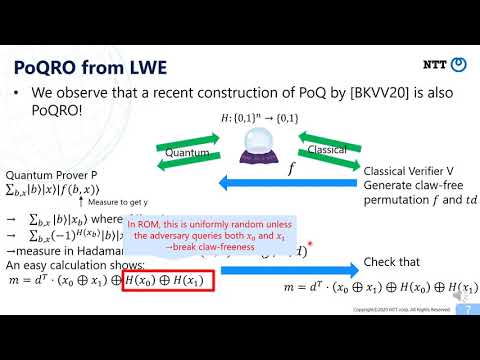CryptoDB
Classical vs Quantum Random Oracles
| Authors: |
|
|---|---|
| Download: |
|
| Conference: | EUROCRYPT 2021 |
| Abstract: | In this paper, we study relationship between security of cryptographic schemes in the random oracle model (ROM) and quantum random oracle model (QROM). First, we introduce a notion of a proof of quantum access to a random oracle (PoQRO), which is a protocol to prove the capability to quantumly access a random oracle to a classical verifier. We observe that a proof of quantumness recently proposed by Brakerski et al. (TQC '20) can be seen as a PoQRO. We also give a construction of a publicly verifiable PoQRO relative to a classical oracle. Based on them, we construct digital signature and public key encryption schemes that are secure in the ROM but insecure in the QROM. In particular, we obtain the first examples of natural cryptographic schemes that separate the ROM and QROM under a standard cryptographic assumption. On the other hand, we give lifting theorems from security in the ROM to that in the QROM for certain types of cryptographic schemes and security notions. For example, our lifting theorems are applicable to Fiat-Shamir non-interactive arguments, Fiat-Shamir signatures, and Full-Domain-Hash signatures etc. We also discuss applications of our lifting theorems to quantum query complexity. |
Video from EUROCRYPT 2021
BibTeX
@inproceedings{eurocrypt-2021-30873,
title={Classical vs Quantum Random Oracles},
publisher={Springer-Verlag},
doi={10.1007/978-3-030-77886-6_20},
author={Takashi Yamakawa and Mark Zhandry},
year=2021
}

